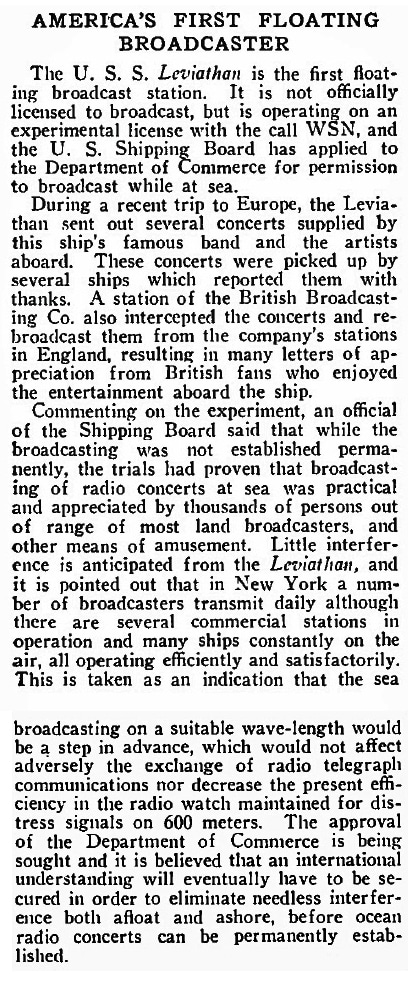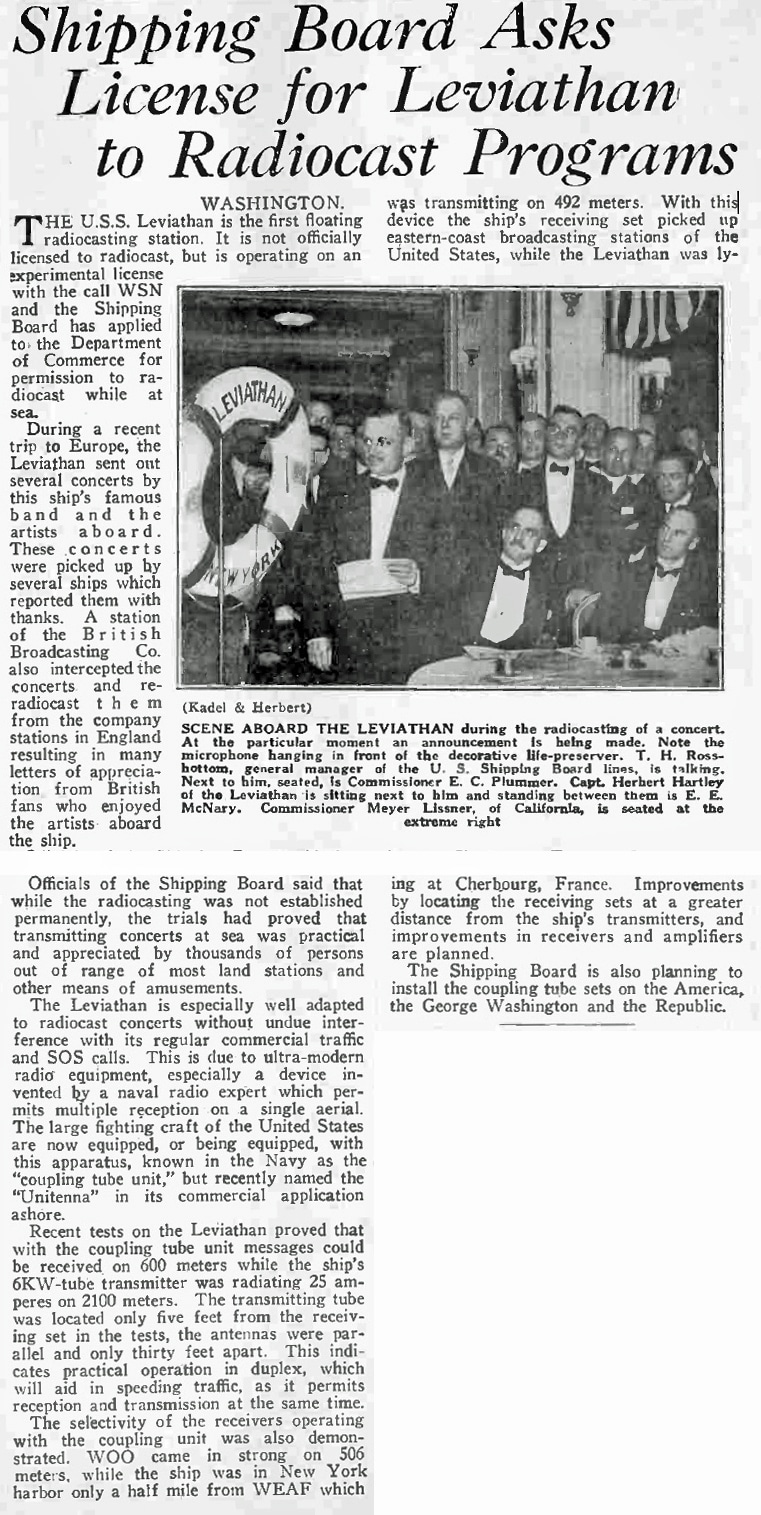Ship details:
Launched 04-03-1913, Blohm&Voss Shipyards, Hamburg
Commisioned 05-01-1914
Size: 54.282 gross tons (European); 15.000 tons
Length: 289.55 m over all (276.59 registered)
Width: 30.48 m
Depth: 19.20 m
Machines: 4 turbines B&V
Speed: 23 knots normal, 25.84 maximum
Capacity: 752+228 first class, 330+205 second class, 850+1532 third class passengers, 1234 crew
Leviathan was built in 1913 as SS Vaterland, Germany’s largest passenger liner. The big liner was lying in a US port in 1917, and was seized by the US Shipping Board upon the US entry into WWI. She was turned over to the Navy, converted into a troopship and placed in service as USS Leviathan. Her name was doubtless a reference to her great size – at over 58,000 tons displacement, she was a very large ship by any standard. After 10 trips carrying troops to Europe, and 9 trips returning the troops home postwar, she was decommissioned in 1919 and returned to the Shipping Board.
The big ship was completely reconditioned at Newport News during 1922-1923. Work included conversion from coal to oil fuel, extensive rewiring, and complete interior redecoration. In addition, completely new plans had to be drawn, as the Germans refused to provide the originals. She was operated by the United States Lines, on the transatlantic route, from 1923 to 1934. She proved to be uneconomical, forcing her lay-up in 1934, and she was scrapped in 1938.

Offshore radio station: Since 1924, the Leviathan even had its own radio station on board, which could be received by numerous hobbyists on both sides of the Atlantic. During transatlantic crossings, it transmitted on a wavelength of about 320 meters. To avoid interference with existing stations, the offshore radio ensured that it transmitted when the London station 2LO (later BBC) concluded its program. Additionally, it did not broadcast when the ship used its wireless telephone service. The shipping company invested significant resources, with eight technicians working in the radio cabin.
The Leviathan’s radio station was named WSN. The station identification consisted of two bell strikes of the ship. The program included jazz music from the ship’s orchestra, weather reports, and broadcasts of conferences held on board. One could also hear stars using the passenger ship for their transatlantic crossings. An example were the Duncan Sisters, a duo of actresses and singers, who were featured on the WSN microphone.
The radio station had a relatively short lifespan. Nevertheless the station continued to broadcast from 1924 for several years. This can be deduced from the February 1931 edition of the American monthly ‘What’s on the Air’. In that issue, the International Short Wave Club published a long list of stations that broadcast “voice” rather than (morse) codes and were received in America. In addition to Radio Kootwijk, the list, which carefully tracked the rare radio reception of those days, also mentioned the Leviathan twice by name. From the loggings, it can be inferred that the radio programs were broadcast under the call letters WSBN and that reception took place at irregular times on the 65.1 meter and 35.5 meter bands in the shorwave. The broadcasts were received during the American evening hours.
The American magazine, Radio News (October 1924 edition), tells the story of what is described as America’s first floating broadcaster:
“The USS Leviathan is the first floating broadcast station. It is not yet officially licensed to broadcast, but instead it is operating on an experimental license with the callsign WSN. The US Shipping Board has applied to the Department of Commerce for permission to broadcast while at sea.
During a recent trip to Europe, the Leviathan sent out several concerts supplied by the ship’s famous band and the artists aboard. These concerts were picked up by several ships which reported the reception with thanks. A station of the British Broadcasting Company in England also intercepted the concerts and re-broadcast them from the company’s network stations, resulting in many letters from British fans who enjoyed the wireless entertainment from aboard the ship.
Commenting on the experiment, an official of the Shipping Board said that while broadcasting from the Leviathan was not established permanently, yet the trials had proven that the broadcasting of concerts while at sea was practical and that it was appreciated by thousands of persons out of range of most land broadcast stations and other means of entertainment.
Little radio interference is anticipated by the broadcasts from the Leviathan. It is pointed out that in New York a number of broadcast stations are on the air daily, and in addition there are several communication stations in operation, as well as many ships constantly on the air, and they all operate effectively and satisfactorily without causing mutual interference.
This is taken as an indication that program broadcasting on a suitable wavelength would be an advance step which would not affect adversely the exchange of radio telegraph communications nor decrease the present efficiency in the radio watch maintained on 600 metres.
The approval of the Department of Commerce is being sought to continue with the concert broadcasts from the Leviathan. It is also understood that an international understanding will need to be secured in order to eliminate needless interference both afloat and ashore, before ocean concerts can be permanently established.” [Information by Dr. Adrian Peterson]
Location: From the international waters of the Atlantic Ocean
Lees ook: De geschiedenis van de Leviathan
Lesen Sie auch: Die Geschichte der Leviathan


